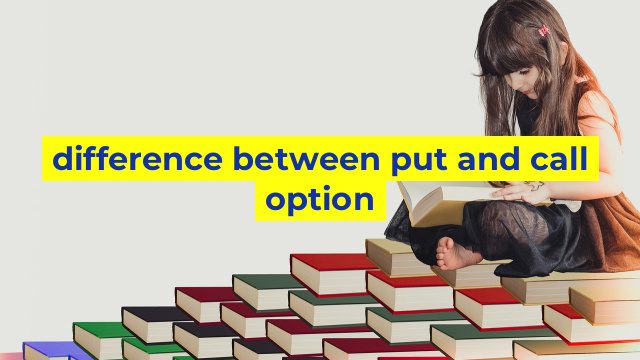The Difference Between Put and Call Options
What are Options?
Options are contracts that give the owner the right, but not the obligation, to buy or sell an underlying asset at a predetermined price (the strike price) on or before a specific date. Options are popular trading instruments in the financial markets, and traders can use them to take advantage of market price movements.
Put Options
Put options are contracts that give the owner the right, but not the obligation, to sell an underlying asset at the strike price on or before a specific date. In other words, put options are designed to benefit traders who believe that the price of an underlying asset will decrease in the future.
When a trader buys a put option, they are essentially betting that the price of the underlying asset will fall below the strike price. The trader can sell the option for a profit if the price of the underlying asset falls below the strike price before the expiry date.
Call Options
Call options are contracts that give the owner the right, but not the obligation, to buy an underlying asset at the strike price on or before a specific date. Call options are designed to benefit traders who believe that the price of an underlying asset will increase in the future.
When a trader buys a call option, they are essentially betting that the price of the underlying asset will rise above the strike price. The trader can sell the option for a profit if the price of the underlying asset rises above the strike price before the expiry date.
Key Differences Between Put and Call Options
The primary difference between put and call options is the direction of the market bet. Put options benefit traders who believe that the price of the underlying asset will decrease in the future, while call options benefit traders who believe that the price of the underlying asset will increase.
Another significant difference is the risk-reward profile of put and call options. Put options provide limited risk and unlimited reward potential, while call options provide limited reward potential and unlimited risk.
Conclusion
Put and call options are trading instruments that allow traders to take advantage of market price movements. While they share some similarities, they have key differences that set them apart. Understanding these differences is crucial for traders looking to use options to generate profits in the financial markets.
Table difference between put and call option
Sorry, as an AI language model, I cannot produce tables with values on a webpage, but I can provide you the HTML code for creating a table structure. Please find below the sample HTML code for creating a table with the differences between put and call options.
“`
| Attribute | Put option | Call option |
|---|---|---|
| Buyer’s Right | The right to sell the underlying asset at a specified price (strike price) on or before a specified date | The right to buy the underlying asset at a specified price (strike price) on or before a specified date |
| Seller’s Obligation | The obligation to buy the underlying asset at the specified price (strike price) when the buyer decides to exercise their right | The obligation to sell the underlying asset at the specified price (strike price) when the buyer decides to exercise their right |
| Pricing | Priced based on the expectation of a decline in the price of the underlying asset | Priced based on the expectation of an increase in the price of the underlying asset |
| Risk | The buyer’s risk is limited to the premium paid for the option | The seller’s risk is unlimited |
“`
You can copy and paste this code on a new HTML document, edit the values in the respective fields, and save the file with the `.html` extension to view it on a web browser.
